A critical period of vulnerability to adolescent stress: epigenetic mediators in mesocortical dopaminergic neurons
- PMID: 26908623
- PMCID: PMC4787906
- DOI: 10.1093/hmg/ddw019
A critical period of vulnerability to adolescent stress: epigenetic mediators in mesocortical dopaminergic neurons
Abstract
The molecular basis of vulnerability to stress during the adolescent period is largely unknown. To identify potential molecular mediators that may play a role in stress-induced behavioral deficits, we imposed social isolation on a genetically vulnerable mouse model. We report that 3-week (5-8 weeks of age) adolescent stress in combination with disrupted-in-schizophrenia 1 (Disc1) genetic risk elicits alterations in DNA methylation of a specific set of genes, tyrosine hydroxylase, brain-derived neurotrophic factor and FK506 binding protein 5. The epigenetic changes in the mesocortical dopaminergic neurons were prevented when animals were treated with a glucocorticoid receptor (GR) antagonist RU486 during social isolation, which implicates the role for glucocorticoid signaling in this pathological event. We define the critical period of GR intervention as the first 1-week period during the stress regimen, suggesting that this particular week in adolescence may be a specific period of maturation and function of mesocortical dopaminergic neurons and their sensitivity to glucocorticoids. Our study may also imply the clinical significance of early detection and prophylactic intervention against conditions associated with adolescent social stress in individuals with genetic risk.
© The Author 2016. Published by Oxford University Press. All rights reserved. For Permissions, please email: journals.permissions@oup.com.
Figures
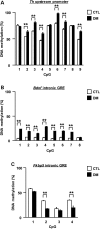
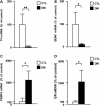
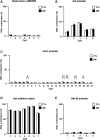


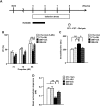

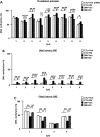
Similar articles
-
Adolescent stress-induced epigenetic control of dopaminergic neurons via glucocorticoids.Science. 2013 Jan 18;339(6117):335-9. doi: 10.1126/science.1226931. Science. 2013. PMID: 23329051 Free PMC article.
-
Mechanisms of Brain Glucocorticoid Resistance in Stress-Induced Psychopathologies.Biochemistry (Mosc). 2017 Mar;82(3):351-365. doi: 10.1134/S0006297917030142. Biochemistry (Mosc). 2017. PMID: 28320277 Review.
-
Neuroscience. Hormones and the social brain.Science. 2013 Jan 18;339(6117):279-80. doi: 10.1126/science.1233713. Science. 2013. PMID: 23329037 No abstract available.
-
Lack of interleukin-13 receptor α1 delays the loss of dopaminergic neurons during chronic stress.J Neuroinflammation. 2017 Apr 21;14(1):88. doi: 10.1186/s12974-017-0862-1. J Neuroinflammation. 2017. PMID: 28427412 Free PMC article.
-
[Posttraumatic stress disorder (PTSD) as a consequence of the interaction between an individual genetic susceptibility, a traumatogenic event and a social context].Encephale. 2012 Oct;38(5):373-80. doi: 10.1016/j.encep.2011.12.003. Epub 2012 Jan 24. Encephale. 2012. PMID: 23062450 Review. French.
Cited by
-
Gene × Environment Interactions in Schizophrenia: Evidence from Genetic Mouse Models.Neural Plast. 2016;2016:2173748. doi: 10.1155/2016/2173748. Epub 2016 Sep 20. Neural Plast. 2016. PMID: 27725886 Free PMC article. Review.
-
Effect of Genotype and Maternal Affective Disorder on Intronic Methylation of FK506 Binding Protein 5 in Cord Blood DNA.Front Genet. 2018 Dec 17;9:648. doi: 10.3389/fgene.2018.00648. eCollection 2018. Front Genet. 2018. PMID: 30619472 Free PMC article.
-
Assessing the Role of Cortisol in Anxiety, Major Depression, and Neuroticism: A Mendelian Randomization Study Using SERPINA6/SERPINA1 Variants.Biol Psychiatry Glob Open Sci. 2024 Feb 18;4(3):100294. doi: 10.1016/j.bpsgos.2024.100294. eCollection 2024 May. Biol Psychiatry Glob Open Sci. 2024. PMID: 38525495 Free PMC article.
-
Assessing Reality Testing in Mice Through Dopamine-Dependent Associatively Evoked Processing of Absent Gustatory Stimuli.Schizophr Bull. 2020 Jan 4;46(1):54-67. doi: 10.1093/schbul/sbz043. Schizophr Bull. 2020. PMID: 31150554 Free PMC article.
-
Adolescent stress accelerates postpartum novelty recognition impairment in 5xFAD mice.Front Neurosci. 2024 May 15;18:1366199. doi: 10.3389/fnins.2024.1366199. eCollection 2024. Front Neurosci. 2024. PMID: 38812977 Free PMC article.
References
-
- Blakemore S.J. (2008) The social brain in adolescence. Nat. Rev. Neurosci., 9, 267–277. - PubMed
-
- Caspi A., Roberts B.W., Shiner R.L. (2005) Personality development: stability and change. Ann. Rev. Psychol., 56, 453–484. - PubMed
-
- Gunnar M., Quevedo K. (2007) The neurobiology of stress and development. Ann. Rev. Psychol., 58, 145–173. - PubMed
Publication types
MeSH terms
Substances
Grants and funding
- P50 MH094268/MH/NIMH NIH HHS/United States
- MH-069853/MH/NIMH NIH HHS/United States
- MH-092443/MH/NIMH NIH HHS/United States
- K99 MH094408/MH/NIMH NIH HHS/United States
- MH-084018/MH/NIMH NIH HHS/United States
- MH-085226/MH/NIMH NIH HHS/United States
- R21 DA040127/DA/NIDA NIH HHS/United States
- MH-094268/MH/NIMH NIH HHS/United States
- DA-040127/DA/NIDA NIH HHS/United States
- R01 MH092443/MH/NIMH NIH HHS/United States
- R00 MH093458/MH/NIMH NIH HHS/United States
- K99MH-094408/MH/NIMH NIH HHS/United States
- MH-088753/MH/NIMH NIH HHS/United States
LinkOut - more resources
Full Text Sources
Other Literature Sources
Medical
Molecular Biology Databases

